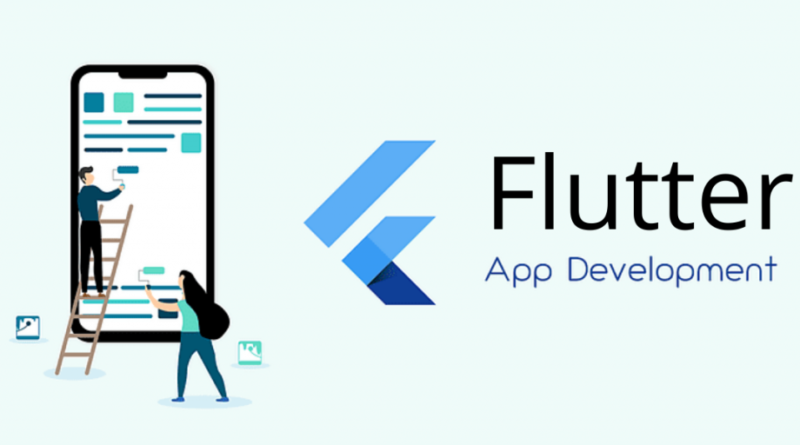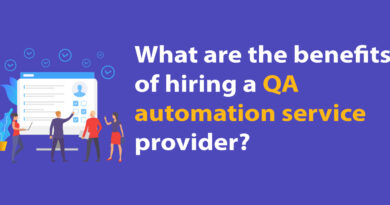Flutter for Mobile App Development: Overview and Benefits
Flutter is an open-source mobile app development framework developed by Google that uses the Dart programming language and enables developers to create applications for Android, iOS, and Web from a single codebase. It has received much attention in the developer community due to its unique features, like rich widgets and hot reload, which offer several benefits over native Android and iOS development with Java or Swift respectively. These features make Flutter a good choice if you are looking to develop an application with native performance without having to write multiple codebases in different languages with similar functionality from scratch.
What is Flutter?
The Flutter framework is a new way to create iOS, Android, and web applications. By providing a single codebase solution with high levels of performance and cross-platform compatibility, Flutter eliminates the costly task of maintaining multiple platforms. The native app framework creates apps that not only feel natural on each operating system but offer access to all of the user’s native device features such as touch screens, sensors, widgets, GPS location services, camera access—the list goes on. It also allows you to use its hot reload function which saves developers from having to deploy their code in order to see any changes made in real-time.
Benefits of Flutter in Mobile App Development
Building an app from the ground up can be daunting, and hiring someone to do it for you can be pricey. Fortunately, Google has released Flutter with all the tools necessary to build a mobile app. Furthermore, the app is built with Dart which is easy to learn and program in. And because Flutter uses Dart as its programming language, developers can write both Android and iOS apps simultaneously.
The excellent interface of any complexity
Create Your Own Custom Touch Interfaces with the Flutter Framework’s Overlay Gestures Developing mobile apps? Discover a platform to design interfaces for all complexities. The Flutter framework is a new option that allows developers to create custom touch interfaces without any coding knowledge. This platform is constantly evolving and designed to be lightweight, run at near-native speeds, and feel natural across different devices. Whether you are an Android or iOS user, Flutter has what you need to build amazing mobile apps.
Quick start
Here’s what you need to know about Flutter, which was released by Google in 2017 as a free and open-source mobile app SDK (software development kit). Though its best suited for cross-platform mobile apps, it can also be used for web apps. The platform is currently compatible with Android. With the aim of making an app fast and easy to develop, it provides developers with an interface that doesn’t require coding knowledge or extensive software engineering experience. Instead, they can use the simple command line tool or the IDE (integrated development environment) that supports Visual Studio Code and IntelliJ IDEA. Additionally, Flutter includes Hot Reloading, which updates any changes made without needing to restart the application.
How is it different from other mobile app SDKs?
Flutter is a new, free, open-source mobile app SDK that helps developers use the same code to create apps across Android and iOS. The advantages of this SDK include its simple framework that gives users fast rendering; it also has an open-source nature that provides accessibility. Finally, because Fluttering apps are compiled instead of running on Java or Kotlin bytecode, they have near instantaneous loading times. Flutter also comes with native support for hardware APIs, emulators that allow you to test app performance on a variety of hardware profiles (including different devices), and third-party plugins like Firebase out of the box.
Getting Started with Flutter
It doesn’t take long to learn the basics of Flutter development. Unlike React Native, which requires knowledge of JavaScript, HTML and CSS languages, Flutter is written in Dart – which is similar to Java or C++. It can be used by developers who know Android’s programming language (Kotlin) as well as those familiar with Java or Swift.
What Can We Build with Flutter?
– Flutter is based on the new programming language from Google called Dart, which is easy to learn. The language has modern features that help development teams rapidly build high-quality apps.
– With a big corporate sponsor like Google, the company should have a long-term commitment to Flutter’s success. Furthermore, because of Dart’s rich set of APIs and libraries for mobile developers, the transition from native languages should be straightforward.
Advantages of Using Flutter?
# Saving time – With Flutter, the process of coding can be reduced to just a few weeks.
# Save Money – Flutter comes with a lot of pre-built widgets that can cut down the cost of development. # Time to market – Flutter’s speed means your product will be out sooner in the app store.
# Compatibility – Developing on Flutter also means you can use it on any OS (macOS, Linux) or IDE (Eclipse, Android Studio). Your resources won’t need to depend on expensive mobile OS licenses.
Challenges of Using Flutter
The biggest challenge is that iOS development is not completely compatible with Flutter. This means that you will need to do some additional work if you want your app to be able to run on iOS. Other challenges are the upfront cost of setting up a Flutter app and understanding how to use the software. One can go through the Flutter Documentation, but it’s not always a straightforward process. Once developers know what they’re doing, they usually say they’ll never switch back because of how much time it saves them by being able to produce an app so quickly.
Conclusion –
Want to learn more about how Flutter can help with your mobile app development? Contact the Flutter development company! They have an amazing track record in building both Android and iOS apps.


